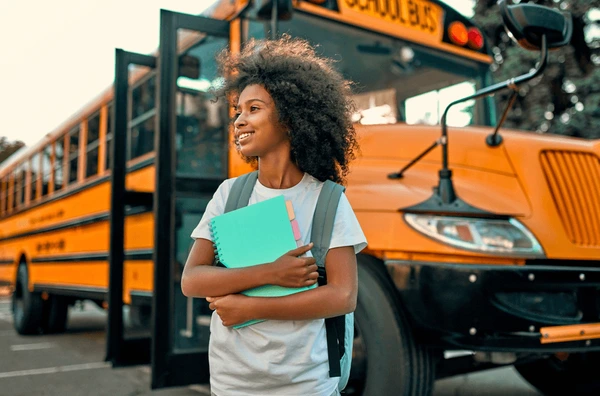JAKARTA, incaschool.sch.id – In today’s interconnected world, cultural literacy has become an essential component of education. As students encounter diverse cultures, beliefs, and practices, understanding and appreciating these differences is crucial for fostering a harmonious and inclusive society. Cultural literacy empowers students to engage with global perspectives, promoting empathy, critical thinking, and responsible citizenship. This article explores the significance of cultural literacy in schools, its key components, and effective strategies for integrating global perspectives into the curriculum.
Understanding Cultural Literacy

1. Defining Cultural Literacy
Cultural literacy refers to the knowledge and understanding of different cultures, histories, and social practices. It encompasses the ability to recognize and appreciate cultural diversity, as well as the skills to communicate and interact effectively across cultural boundaries. Cultural literacy is not only about acquiring knowledge; it also involves developing attitudes of respect and openness toward others.
2. The Importance of Cultural Literacy in Education
Educating students about cultural literacy is vital for several reasons:
- Promoting Understanding: Cultural literacy helps students understand the complexities of global societies, fostering appreciation for different perspectives and lifestyles.
- Enhancing Empathy: By learning about diverse cultures, students can develop empathy and compassion, which are essential for building positive relationships and communities.
- Preparing for a Globalized World: In an increasingly globalized society, cultural literacy equips students with the skills needed to navigate diverse environments and collaborate with individuals from various backgrounds.
- Encouraging Critical Thinking: Engaging with different cultures challenges students to think critically about their own beliefs and assumptions, promoting open-mindedness and adaptability.
Key Components of Cultural Literacy
To effectively embrace cultural literacy in schools, educators should focus on several key components:
1. Awareness of Cultural Diversity
Students should learn about the rich tapestry of cultures that exist globally, including their histories, traditions, languages, and contributions to society. This awareness lays the foundation for understanding and appreciating cultural differences.
2. Communication Skills
Cultural literacy involves developing effective communication skills that enable students to interact respectfully and meaningfully with individuals from diverse backgrounds. This includes active listening, empathy, and the ability to navigate language barriers.
3. Critical Reflection
Encouraging students to critically reflect on their own cultural identities and biases helps them understand how their experiences shape their perspectives. This self-awareness is crucial for fostering open-mindedness and reducing stereotypes.
4. Global Citizenship
Cultural literacy promotes the idea of global citizenship, where students recognize their responsibilities to contribute positively to the world. This includes understanding global issues, advocating for social justice, and engaging in community service.
Strategies for Integrating Cultural Literacy in Schools
To effectively promote cultural literacy, educators can implement various strategies:
1. Diverse Curriculum Content
Experience
Incorporating diverse voices and perspectives into the curriculum enriches students’ understanding of the world.
Strategies Implemented
- Multicultural Literature: Include literature from diverse authors that reflects various cultural experiences and perspectives. This exposes students to different narratives and encourages empathy.
- History and Social Studies: Teach history and social studies from multiple viewpoints, highlighting the contributions and experiences of different cultures. This helps students understand the complexities of historical events.
2. Cultural Exchange Programs
Experience
Engaging in cultural exchange programs allows students to experience different cultures firsthand.
Strategies Implemented
- Pen Pal Programs: Establish pen pal programs with students from different countries, enabling students to learn about each other’s cultures and share their own experiences.
- Study Abroad Opportunities: Encourage students to participate in study abroad programs that immerse them in different cultural environments. This experience fosters a deeper understanding of global perspectives.
3. Community Engagement
Experience
Connecting with local communities can enhance students’ cultural literacy and promote understanding of diverse cultures.
Strategies Implemented
- Cultural Events: Organize cultural events and festivals that celebrate diversity within the school community. These events provide opportunities for students to learn about different traditions and practices.
- Service Learning: Incorporate service learning projects that engage students with diverse communities. This hands-on experience fosters empathy and understanding.
4. Technology and Global Collaboration
Experience
Leveraging technology can facilitate global collaboration and broaden students’ perspectives.
Strategies Implemented
- Virtual Exchange Programs: Use technology to connect students with peers from around the world through virtual exchange programs. This allows for meaningful discussions and cultural sharing.
- Online Research Projects: Assign projects that require students to research global issues and collaborate with students from different cultural backgrounds. This encourages critical thinking and teamwork.
5. Encourage Open Dialogue
Experience
Creating a safe space for open dialogue promotes understanding and respect for diverse perspectives.
Strategies Implemented
- Class Discussions: Facilitate class discussions on cultural topics, encouraging students to share their thoughts and experiences. This promotes active listening and empathy.
- Debates and Role-Playing: Organize debates and role-playing activities that allow students to explore different viewpoints on cultural issues. This encourages critical reflection and understanding.
Measuring Progress in Cultural Literacy
To evaluate students’ cultural literacy and engagement, educators can implement various measurement strategies:
1. Assessments and Projects
Regular assessments and projects can help gauge students’ understanding of cultural concepts and their ability to apply what they have learned.
2. Reflective Journals
Encourage students to maintain reflective journals where they document their thoughts on cultural topics, experiences, and interactions. This promotes self-reflection and personal growth.
3. Feedback Surveys
Conduct surveys to gather feedback on students’ experiences with cultural literacy education. This information can help educators refine their teaching strategies and improve engagement.
4. Community Involvement
Evaluate students’ involvement in community engagement and service learning projects. Active participation can indicate a deeper understanding of cultural literacy.
Conclusion
Cultural literacy is an essential aspect of education that prepares students to navigate an increasingly diverse and interconnected world. By embracing global perspectives, schools can foster understanding, empathy, and responsible citizenship among students.
Through diverse curriculum content, cultural exchange programs, community engagement, technology integration, and open dialogue, educators can effectively promote cultural literacy and empower students to become informed global citizens. As we prepare the next generation to face the challenges of a multicultural world, prioritizing cultural literacy in education will ensure that students are equipped with the knowledge and skills needed to contribute positively to society and embrace the richness of human diversity.
Improve Your Abilities: Explore Our content on Knowledge
Take a Look at Our Latest Article on Leadership Skills!


